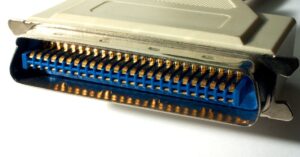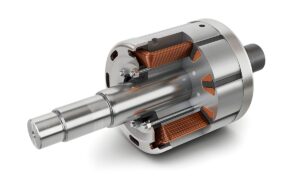In today’s highly digital world, businesses and offices rely heavily on electrical systems to maintain operations. From lighting and heating to computers and servers, electricity is the backbone of modern business infrastructure. However, with great power comes great responsibility – ensuring the safety and efficiency of these electrical systems is crucial. This is where regular electrical inspections come into play. This blog explores the importance of regular electrical inspections for businesses and offices, highlighting their benefits, risks of neglect and best practices for maintaining a safe and efficient workplace.
Electricity is the lifeblood of any modern business, powering essential operations and ensuring smooth running. However, electrical systems can be a double-edged sword, offering tremendous benefits while posing significant risks if not properly maintained. Regular electrical inspections are a proactive measure to ensure the safety, efficiency and reliability of your company’s electrical infrastructure. This comprehensive guide delves into the importance of these inspections and provides actionable insights to protect your workplace.
Why regular electrical inspections are so important
safety first
The main reason for performing regular electrical inspections is to ensure the safety of employees, customers and physical premises. Faulty wiring, overloaded circuits, and outdated electrical systems are common causes of fires and electrical accidents. Regular inspections help identify and correct these problems before they become worse, reducing the risk of fire, electrocution, and other electrical hazards.
Key safety benefits:
Identify fire hazards: Regular inspections can detect deteriorating insulation, inaccurate connections, and other fire hazards. Electrical shock prevention: Ensuring that all electrical components are properly grounded and insulated helps prevent electrical shock incidents. Safe Work Environment: A safe electrical system promotes a safe workplace, which enhances employee confidence and productivity.
Prevent downtime
Electrical failures can lead to significant downtime, disrupt business operations, and result in financial losses. Regular inspections help detect potential problems early, allowing for timely repairs and maintenance. This proactive approach reduces unexpected breakdowns and keeps the business running smoothly.
Strategies to prevent downtime:
Early detection of problems: Identifying problems before they cause major disruptions. Scheduled Maintenance: Plan repairs during non-operating hours to avoid interruptions. System redundancy: Ensuring that backup systems are in place and working.
Compliance with regulations
Businesses must adhere to various electrical safety regulations and standards, such as those set by the Occupational Safety and Health Administration (OSHA) and the National Fire Protection Association (NFPA). Regular electrical inspections ensure compliance with these regulations, avoiding legal issues and potential fines.
Benefits of regulatory compliance:
Avoid Fines: Complying with safety standards prevents costly fines and legal penalties. Insurance Benefits: Many insurance companies require proof of regular coverage inspections. Enhance Reputation: A commitment to safety and compliance enhances your business reputation among customers and stakeholders.
Main components of electrical inspection
A comprehensive electrical inspection covers many important components to ensure the overall safety and efficiency of the electrical system. Below are the main areas inspected:
Wires and cables
Wire and cable inspection includes checking for wear and tear, ensuring proper insulation, and making sure the cables are not overloaded. Proper wiring is essential to prevent short circuits and fires.
Inspection focus points:
Insulation integrity: Ensure that wires are properly insulated to prevent short circuits. Proper Sizing: Verify that the cables are sized appropriately for their loads. Secure connections: Verify that all connections are tight and secure.
Electrical panels and circuit breakers
Electrical panels and circuit breakers are the heart of any electrical system. Checking these components ensures that they are working properly and able to handle the electrical load.
Inspection focus points:
Board condition: Check for signs of wear, corrosion and overheating. Breaker function: Ensure that circuit breakers operate appropriately under fault conditions. Load Balancing: Verifying that electrical loads are distributed evenly across circuits.
Grounding systems
Proper grounding is essential for safety, preventing electrical shock, and ensuring smooth operation of sensitive electronic equipment. Inspections verify that grounding systems are proper and effective.
Inspection focus points:
Earthing Connections: Ensure that all grounding connections are safe and corrosion-free. Earth resistance: Measure the earth resistance to ensure the effectiveness of the grounding system. Bonding: Verify that all metal parts are properly bonded to the grounding system.
Safety devices
Safety devices such as surge protectors, GFCIs (ground fault circuit interrupters) and smoke detectors play a critical role in protecting the electrical system and occupants. Regular inspections ensure the operation and reliability of these devices.
Inspection focus points:
Surge Protection: Inspect surge protectors to ensure functionality and proper installation.
Risks of neglecting electrical inspection
Neglecting regular electrical inspections can lead to serious consequences, ranging from safety risks to financial losses. Understanding these risks underscores the importance of proactive electrical maintenance.
Fire risks
Faulty electrical systems are the leading cause of fires in commercial buildings. Problems such as old wiring, overloaded circuits, and poor maintenance can spark fires, posing a major threat to lives and property.
Fire risks:
Old wiring: Old wiring can deteriorate, increasing the risk of fire. Overloaded circuits: An electrical overload can cause circuits to overheat and start fires. Poor Maintenance: Lack of regular maintenance can cause small problems to become major fire hazards.
Equipment failure
Electrical problems can cause sensitive equipment to malfunction or fail completely. This can result in significant financial losses, especially if important business operations are affected.
Risks of equipment failure:
Data loss: Electrical faults can cause data to be corrupted or lost, affecting business operations. Downtime: Malfunctioning equipment can shut down production and reduce productivity. Repair costs: Frequent equipment malfunctions increase repair and replacement costs.
Increased energy costs
Inefficient electrical systems consume more energy, resulting in higher utility bills. Regular inspections help identify and correct deficiencies, improving energy use and reducing costs.
Energy cost risks:
Higher utility bills: Inefficient systems consume more energy, increasing operating costs. Environmental impact: Excessive energy consumption contributes to increasing the carbon footprint. Waste of Resources: Inefficient systems waste valuable resources and reduce overall efficiency.
Best practices for electrical inspection
Applying best practices for electrical inspections ensures that your company gets the maximum benefits from routine maintenance. Here are some key strategies to follow:
Hiring qualified electricians
Electrical inspections should be performed by licensed and qualified electricians with experience in commercial systems. Their experience ensures thorough and accurate inspections.
Recruitment Tips:
Credentials: Verify the electrician’s qualifications and certifications. Experience: Choose electricians with experience in commercial electrical systems. References: Check references and reviews from previous clients.
Regular maintenance schedules
Establishing a regular maintenance schedule will help keep your electrical systems in top condition. Regular intervals of inspections ensure that potential problems are identified and addressed promptly.
Scheduling Tips:
Annual Inspections: Conduct comprehensive inspections at least once a year. Seasonal Inspections: Perform additional inspections before seasonal changes to address weather-related issues. Preventive Maintenance: Schedule maintenance tasks based on manufacturer recommendations and industry standards.
Documentation of inspections
Maintaining detailed records of all inspection and maintenance activities is critical to tracking the condition of your electrical system and ensuring compliance with regulations.
Documentation tips:
Inspection Reports: Maintain detailed reports on each inspection, noting any problems and corrective actions taken. Maintenance Records: Keep a record of all maintenance activities, including dates, tasks completed, and parts replaced. Compliance Records: Store records to prove compliance with safety regulations and standards.



